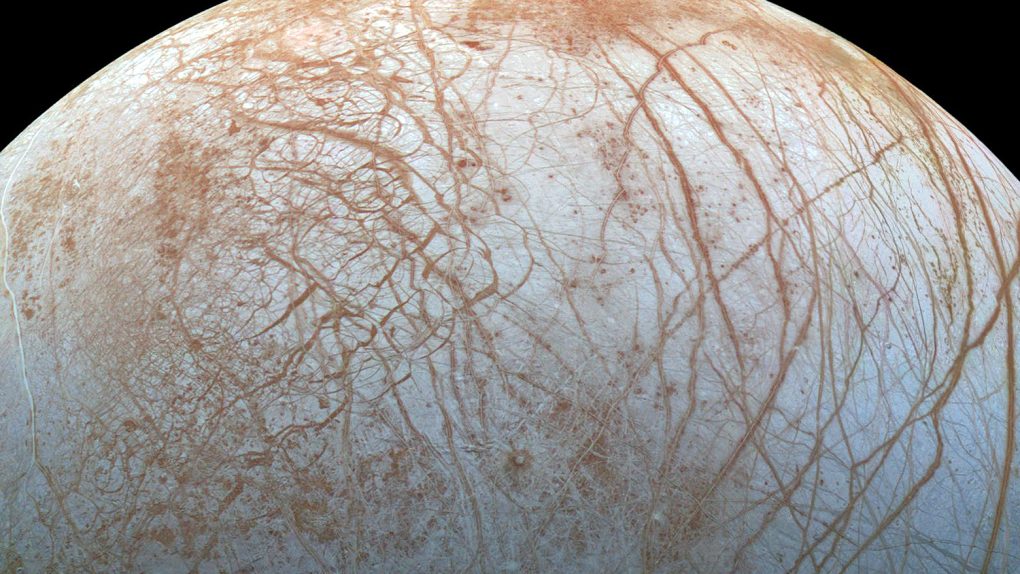Exoplanets orbiting distant stars might be our best chance of finding advanced, complex life forms, but there’s still a handful of places in our own Solar System where life could still be hiding, we just have to find it. Jupiter’s moon Europa is one of those places, and while we’ve gotten some great glimpses of its surface there’s a good reason why we haven’t seen signs of life: It’s probably inside the planet itself.
Europa is a massive watery world covered by a layer of icy crust. That ice is hiding what scientists believe is a vast ocean, and that ocean may very well having something living in it. A new study published in Nature Astronomy explains how we might go about detecting that life, and it actually sounds a bit easier than you might think.
The paper focuses on how far we’d have to dig into the moon’s ice layer in order to harvest samples that would provide proof of life in the water beneath. The ice, of course, is made of the same water that rests beneath, and if there’s life in that water the ice likely holds frozen biological material that a spacecraft could test.
However, scientists believe that radiation from space and Jupiter’s atmosphere is probably wreaking havoc on any biological material on the surface. That’s bad news, because it could cause that material to break down over time, making it essentially useless to researchers.
That’s a bummer, but the researchers say that finding usable samples will actually still be fairly easy. According to the paper, a lander won’t have to dig very deep to find a clean sample that hasn’t been tainted by radiation.
“Radiation processing and destruction of potential biosignatures is found to be significant down to depths of ~1 cm in mid- to high-latitude regions, and to depths of 10–20 cm within ‘radiation lenses’ centred on the leading and trailing hemispheres,” the scientists explain. “These results indicate that future missions to Europa’s surface do not need to excavate material to great depths to investigate the composition of endogenic material and search for potential biosignatures.”
Put simply, radiation should only be a problem within the first inch of the surface, and maybe as deep as 8 inches in certain areas. A lander or rover capable of drilling into the planet (similar to how NASA’s Mars Curiosity rover drills into rocks on the Red Planet) should have no problem snagging some useful samples and potentially proving the existence of life deep within the planet’s ocean.








